
Philippine Defense Today (Adroth.ph)
In Defense of the Republic of the PhilippinesFlashback: AFP modernization – 2003 to 2006
Saturday , 22, February 2014 AFP modernization 1 CommentAs we ponder the never ending delays that plague defense acquisitions in the Aquino administration, it would be healthy to recall the state of affairs a mere 10 years ago. Back to the days of the Arroyo administration when modernization funding was completely pegged to the meager P5B annual allocation that the AFP modernization law had set as the floor for such funding. Despite its prevailing decrepit state, the AFP has actually come a long way. This article is an exploration of that recent-history. While the AFP modernization program covers a wide range of improvement efforts, from capability and materiel, bases, and even doctrines. This article focuses only one aspect of the effort: Capability and Materiel development.
The AFP’s long-standing dependency on US aid and Foreign Military Sales assistance meant that it sorely lacked the expertise required to conduct independent equipment acquisitions on the open defense market. Modernization proponents blame this deficiency for the delay in the implementation of the modernization program. Although the AFP Modernization Law had been signed in 1995, the first acquisitions as part of this program didn’t yield results until 2003.
The first true modernization acquisition was the Squad Automatic Weapon (SAW) acquisition for the Philippine Army and the Philippine Marines. The contract to supply the first batch of weapons went to FN Herstal of Belgium which supplied the AFP with 402 factory-fresh M249 5.56mm SAWs. A follow-on purchase for SAWs took place in 2007, but that contract did not go to FN Herstal.
 |
Another prominent was the acquisition of a Armored Recovery Vehicle from SS Savunma Sistemleri A. S. of Turkey. Reportedly hard lessons that Philippine armored units learned from the difficulties of operating without such vehicles in the 2000 Mindanao campaign against the MILF, only three years prior, reportedly served as a catalyst for the acquisition.
 |
Other acquisitions from this landmark year and the following year are listed below. This table is a screen capture of an AFP modernization report.
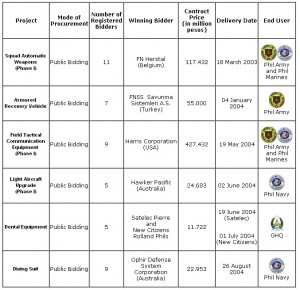 |
Much to the dismay of external-defense advocates, the year 2005 radically altered the direction of the modernization program. At this point the Philippine Defense Reform program took effect and reworked the AFP Modernization Program into the Capability Upgrade Program, which shifted the focus of capability improvements to Internal Security Operations. The change, however, was not without justification. The loss of US aid as result of the closure of US military bases in Clark and Subic had taken its toll on the AFP’s material condition. Subsidies for the Philippine Air Force and Philippine Navy had wrecked havoc on maintenance cycles. Land-based mobility capability had reportedly dipped below 50% of the AFP needs. Troops were communicating with each other using Vietnam-era radios that were sending messages in the clear — which could be picked up by anyone with a commercial radio set that could be set to the same frequencies. The shift from the AFPMP to the CUP implemented a back-to-basics program that initially focused on a 5-year program to improve the AFP’s Move-Shoot-Communicate capabilities. Subsequent phases were designed to return the armed forces back to an external defense focus.
Whereas 2003 saw the first modernization acquisition of any kind, AFP modernization watchers remember 2005 as the year of the first true external-defense-relevant purchase: digital radios with military-grade encryption c/o Harris Communications. Many of the features of these radios are still classified. What is known however is that the communication-security they provided was game-changing for ISO — denying rebel signal intelligence of the data to which they had gotten accustomed — and brought the AFP into the 21st century as far as signal communication was concerned. The Philippine Army received 1,853 units of VHF/FM 2W radios, while 103 units went to the Philippine Marines. Additional radios were acquired in subsequent years.
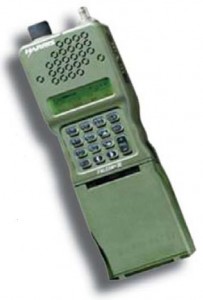 |
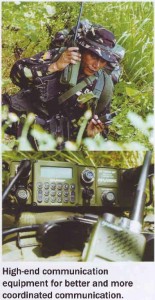 |
Oriental Industry Ltd of South Korea received a contract to supply 3,100 sets of cermic-plate-based bulletproof vest and kevlar helmets for the Philippine Army and 5,000 kevlar helmets for the Marines. The first batch of 3,936 pieces of of ballistic helmets and 200 pieces of armor vests and plates were received on October 15, 2005 while the remainder were delivered December 2, 2005.
 |
A contract to acquire twenty (20) refurbished UH-1H helicopters from Singapore Technologies Aerospace was signed on January 2004. The helicopters were delivered in seven batches with the delivery taking place August 2004. The last batch was delivered in May 2005.
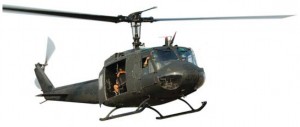 |
Other acquisitions for the year are as follows:
 |
In keeping with the reduced scope of the AFP’s upgrade program, a number of modest acquisitions took place in 2006. The Philippine Navy took delivery of two ex-South Korean Chamsuri class Patrol Killer Medium (PKM) boats where were commissioned as Tomas Batillo class gun boats. Because of a failure to find both interested and qualified bidders for the refurbishment of the boat in either South Korea or the Philippines, these were imported as-is in May of 2006. They were later upgraded.
 |
The Philippine Air Force acquired 2nd-hand Fokker F-27 Fellowship transport aircraft, with upgraded FAA/ICAO-compliant avionics, via a negotiated procurement with Aeroglobe Ltd. Inc on October 2005. The aircraft was delivered in October 2006.
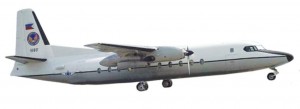 |
For the most part, capability upgrades in 2006 focused on maximizing existing assets. The Jacinto class OPVs received new electro-optical systems from QinetiQ Ltd and a 25mm Remote Controlled Weapon Station from MSI Defense Systems Ltd. The upgrades were performed at the Keppel Shipyard in Batangas and were completed in March 2006. This marked the first of three upgrade phases for the class. The second phase of the program involved an engineering upgrade that was eventually awarded to FF Cruz Inc on December 2006 after a series of bid failure for the project. Interestingly, the original winner of Phase 1, Keppel Shipyard, did not qualify for the 2nd phase of the program.
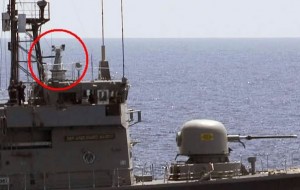 |
 |
OV-10 Broncos of the Philippine Air Force underwent a Service Life Extension Program (SLEP) that included replacement of their original three-blade propellers with four-blade units and an overhaul of the aircraft’s engines. The winning contractor for this bid was the tandem of Marsh Aviation and Aeromart. The first batch of 4 brand new propellers and 4 overhauled engines were delivered on 5 February 2005. Four engines and 4 propellers were subsequently delivered on 19 September 2005. The delivery of 6 propellers on 24 October 2005 completed the delivery of the propellers. The 4 remaining engines arrived on 12 September 2006.
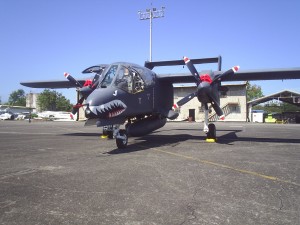 |
The following is a list of acquisition projects for this year.
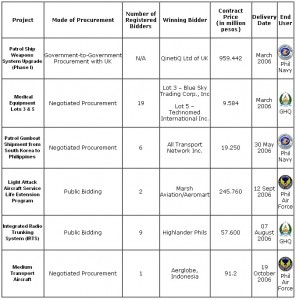 |
[…] Flashback: AFP modernization – 2003 to 2006 […]